
Junwoo
2024-07-22 15:46:26
Behind
Practical GPT Utilization for Startup Marketers (We said GPT, but we only used Claude 😅)
🎓
A Comprehensive Guide to Features Frequently Used by Videostew Creators
How are creators making the most of Videostew? 🤔By exploring use cases of Videostew, we've gathered insights from various creators, leading us to identify four ...
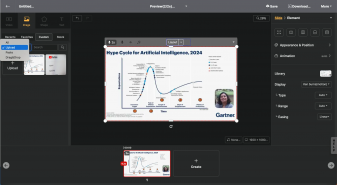
📣
Videostew Team Members Share the Journey of Our 500K Creator Client's YouTube Growth
At Videostew, we run an online chat service where real humans are ready to assist you. Among our team, whenever we talk about memorable customers, the nickname ...
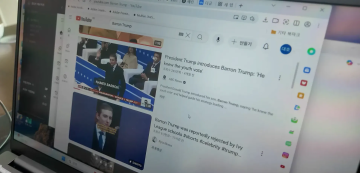
🎓
Best AI Tools for Content Creation in 2025 (A Practical Guide)
Why Is It Time to Rework Your “AI Tool Stack” Now?From traditional blogs and newsletters to Instagram Reels, YouTube Shorts, TikTok videos, and even X and Threa...
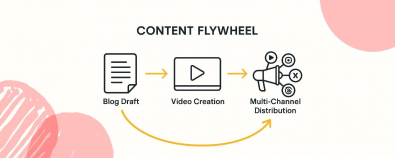
🎓
What's the Best Text to Video AI for Content Marketers? 🤔
This is a sincere, elaborate, and friendly guide from Jun, the operator of Videostew, dedicated to all content marketers tirelessly searching for the “best text...
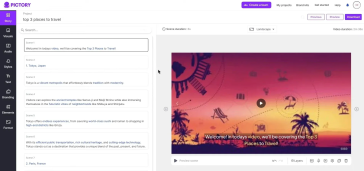
🗞️
[Update] Language Optimization for AI Voice
We are currently optimizing AI voices for each language. 🎙️Previously, if the engine was multilingual, even English voices could smoothly speak other languages....
![[Update] Language Optimization for AI Voice](https://cdn.videostew.com/files/thumb/f13322a3c-7quufcgbm)
🗞️
[Update] MP3 Download Feature
Exciting news! You can now extract audio from your project and download it as an MP3 file. 🎉Before you dive into MP3 bliss, remember to render your project firs...
![[Update] MP3 Download Feature](https://cdn.videostew.com/files/thumb/5a4b397a5-7qqka7317)
🗞️
[Update] AI Image Generation Style Selection Feature Added
You can now generate a variety of illustrations in the AI Image Generation feature under the illustration category. (Image generation feature is available for P...
![[Update] AI Image Generation Style Selection Feature Added](https://cdn.videostew.com/files/thumb/7cd54b9e3-7qndp2d2n)
📣
Videostew Success Story: Meet 'Jalhaja,' a 55-Year-Old Full-Time Homemaker and YouTube Creator with 150,000 Subscribers
From the early days of Videostew, our dedicated user ‘Jalhaja’ has been a loyal customer from our perspective. After more than a year of consistent use, we requ...
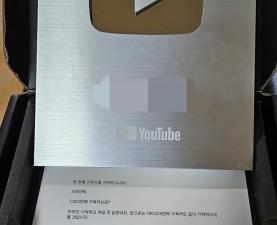
Hello, this is Jun from VideoStew.
Lately, I've been writing a lot of behind-the-scenes posts. In this post, I will summarize how I, as a non-developer at a startup, utilize various AI technologies.
I describe myself as a non-developer because I'm involved in everything except development, including planning, marketing, operations, customer support, and business management! (As is the fate of most startup co-founders.)
First of all, we hardly use GPT or Claude web interfaces. Instead, we use our own service that integrates various LLMs. We call it StuPity (not StuPit…), and you can use it too by just adding your API key.
< StuPity being used internally by the VideoStew team … >
We've integrated major LLMs like GPT, Claude, Llama, and Gemini, so you can conveniently check the response quality of each AI without having to visit multiple sites.
When you view them all together like this, it's useful for finding the cheapest option for simple commands and for checking response consistency and quality.
It's been almost two years since GPT appeared in the world. During that time, I've gradually introduced various AI technologies into my work, making many tasks simpler.
In this post, I will share how I use AI technologies in marketing-related tasks. (By the way, this post is based on my personal experience and did not receive AI assistance. Haha.)
First, Creating Brand Guidelines
Whether you're creating ad materials, writing a blog post, or crafting a newsletter, our branding should always be seamlessly integrated.
However, if this isn't documented, it can be challenging to get proper help from AI in the next step. There's the context issue, and let's be honest, it's a hassle. You have to explain in detail every time, "We have this philosophy, can you give us some ad ideas?"
So, the first thing I did was create a brand book in document form that we could use anytime. To create a USP for branding, I worked with Claude. Here's how we proceeded:
1. Defining the target persona
< The process of completing the target persona >
First, I freely described the characteristics of our target, and then I asked Claude to create a persona based on those characteristics. Claude imagined our target customer and provided a persona with a name, job, background information, and skill set.
2. Specifying customer needs based on the persona
Next, I specified the customer's needs based on the created persona framework. I removed parts I disagreed with and requested additional ideas for the lacking parts, thus refining the customer's needs.
By throwing out rough ideas, Claude organized them, allowing me to review Claude's answers and refine my thoughts. (If you ask why I use Claude, I'd say Claude is like the humanities, and GPT is like the sciences...)
3. Identifying our service's unique selling points
Next, we blatantly ask, "So, what are the unique selling points of our service compared to competitors in the market?" By reviewing Claude's responses, I aim to crystallize my thoughts and gather ideas.
Since the unique features of our service aren't fully reflected yet, the initial responses are filled with general content about typical online video editing solutions floating around the internet.
However, reviewing what Claude suggests is enough to help me solidify my thoughts. Drawing inspiration from Claude's responses above, I have summarized our unique selling points as follows.
4. Creating a USP and Brand Tagline
Now, it's time to craft a one-line USP that says, "This is what our service is." I requested Claude to create a USP by throwing in the summarized unique selling points.
The first attempt's response was far from satisfactory. It was a collection of all the clichés I personally find mundane, like "Easy and Fast," "Professional," and so on... phrases that any competitor could use without standing out.
So, I continued to exchange ideas, honing our USP. This process helps to progressively solidify the vague concepts in my mind.
Finally, the last step was to transform this USP into a tagline. While the USP is descriptive and meant for internal team sharing, the tagline should be directly visible to customers and memorable enough to stick in their minds.
< The process of crafting a brand tagline >
There were many more conversations, but through this process, we completed our brand book centered around our USP and tagline! Now, this will be shared on Notion, and we will continuously refine it with our team members.
< VideoStew's brand book >
The reason this brand book is important is not only for internal sharing but also due to the limitations of contexts like GPT. Moving forward, whether creating new posts or making ads, this brand playbook will always be used as input to show how we maintain our brand consistency across all content.
Second, Adding AI to Ad Material Production
Creating Ad Scripts and Copy Tailored to the Target
With branding in place, shall we try running an ad to attract new users? Once again, we received help from Claude.
< Utilizing LLM for video ad creation >
Of course, you can't be full from the first bite. But rather than thinking of ideas from scratch, looking at the scripts suggested by Claude sparks better ideas, and by ping-ponging with Claude, I complete the storyboard I envision.
Many parts of the conversation were omitted, but after several rounds of ping-pong, I completed a script that I am satisfied with.
Creating Description Prompts for Image Generation
Once the script is ready, it's time to work on the images or videos that will be displayed with the message. For high-quality image creation, good prompting is key. So, we leave this part to Claude. Just straight up ask Claude to create a MidJourney prompt.
< MidJourney prompts crafted by Claude >
Image and Video Creation
Now, I fed each prompt into MidJourney to generate the background images for the video. Since MidJourney produces different results even with the same prompt, I repeated the process a few times until I got an image I liked.
< Image creation through the MidJourney website >
And by generating images in three ratios: 1:1, 16:9, and 9:16, the resource preparation is complete. When creating various ratios, you can use the Reframe feature to regenerate the same image in multiple ratios.
< Converting ratios with MidJourney's reframe feature >
For video resources, I used LumaLabs' Dream Machine. The chances of getting a result good enough to use immediately are like finding a needle in a haystack, but with a bit of time, you can find some decent video sources.
< Adding Midjourney-generated images to Luma Labs and turning them into a video >
Editing Prepared Assets in VideoStew
< Starting video editing by adding the ad script to VideoStew's wizard mode >
Now, I uploaded the prepared script to VideoStew and started adding the images. Since it’s about setting the screen for each paragraph, I intentionally divided the sentences more densely.
< Finalizing the video editing by adding images to VideoStew >
For each slide, I added the Midjourney-generated images along with the actual screen-recorded video, and included AI voice to complete a rough draft.
Of course, since it's a paid ad video, I edited the details more meticulously. Here’s the completed video after going through this process!
To be honest, I spent a lot of time using LLM at the beginning, but it only took about 30 minutes to complete the content with VideoStew. As long as you have a clear message, you can edit stress-free and exactly how you envision it. If you haven't tried VideoStew yet, I highly recommend it. Even someone like me, without a design sense, can easily create something like this.
In Conclusion
Since I wrote in detail about using AI technologies in marketing-related tasks, this post has gotten quite long. I originally intended to introduce everything in one go, including writing blog posts from a content marketing perspective, customer case studies, and newsletter content, but I'll leave that for the next post.
When it comes to customer case studies, we conduct Zoom interviews with our clients and then write blog posts based on those interviews. As you might know, reviewing interview recordings and drafting posts can be quite time-consuming.
This is where STT (Speech-to-Text) comes into play. We transcribe the Zoom interviews using the Whisper API and complete the posts with the help of Claude. (Of course, we never use AI-generated content as is to ensure high quality...)
In this post, we'll share our journey of creating branding books and advertising content. In the next post, we'll dive into our experiences focusing on content marketing!
Since there's no 'like' button on the blog, if you found this helpful, please share it widely.